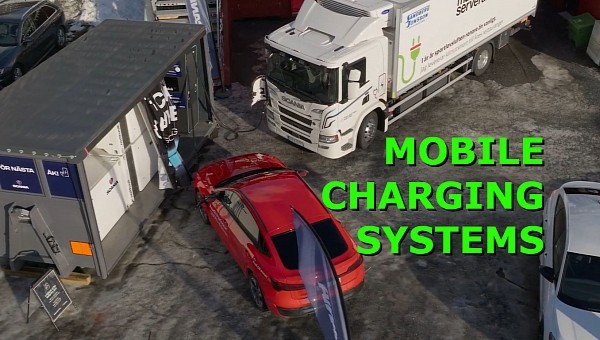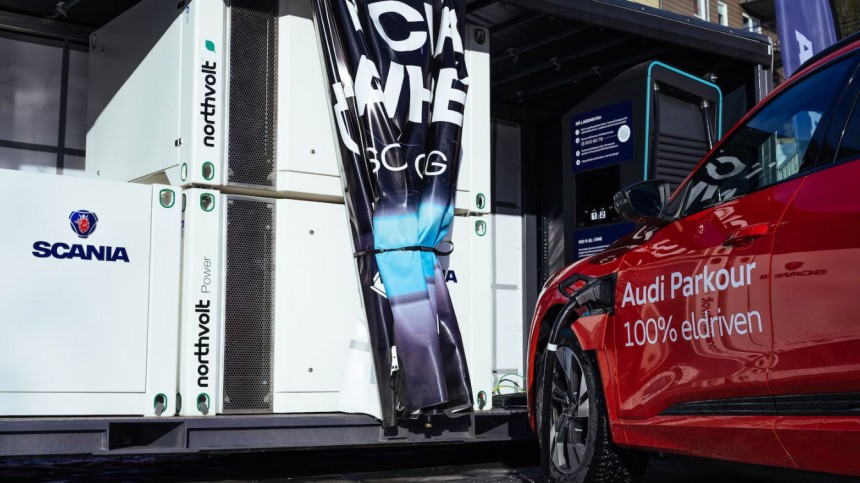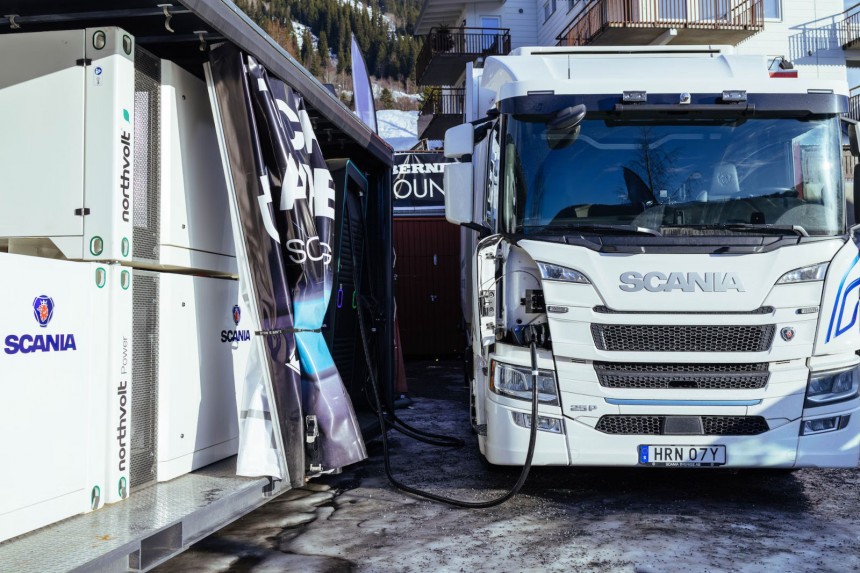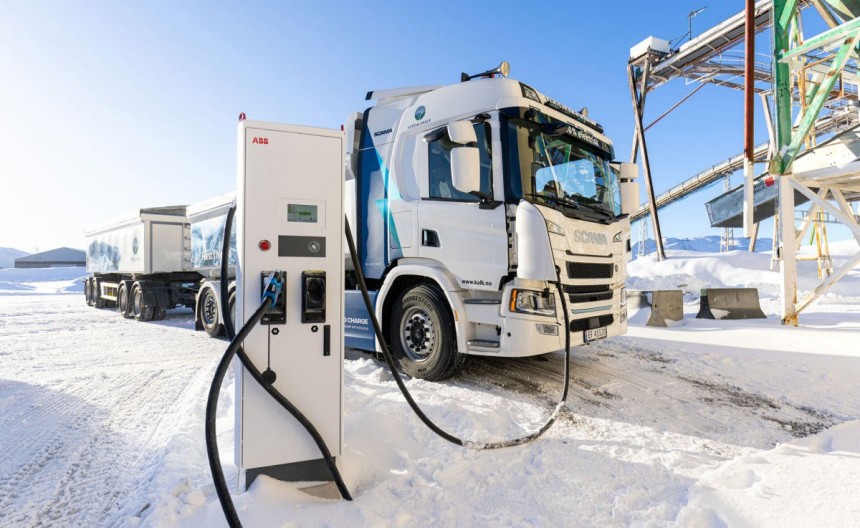There’s an ongoing battle for governmental funds and investors’ money between the proponents of business-as-usual fueling infrastructure and those of electromobility charging networks. But I’m afraid the angle of the debate is the wrong one.
You already know what the biggest issues for most people are when it comes to choosing between an ICE vehicle and a battery-electric one. The EV’s range is poorer, while charging time is much longer than refueling the tank.
Besides, the charging networks are way behind fueling stations infrastructure almost anywhere on the planet. Somehow, popular wisdom was convinced to believe an EV is tied to charging networks, while an ICE car is giving you all the freedom you want.
Now let me get this straight. Every time you want to go on a long journey, it’s like a Dakar expedition experience, right? You pack a lot of survival stuff in your car, add several petrol cans to the roof, and drive off to the unknown, expecting no highway or roads on your way.
Or am I wrong, and you drive on highways or interstates, along with millions of other vehicles? When the fuel gauge signals that the tank will empty soon, you look for a fuel station, so there’s no need for petrol cans. There’s always a fuel station just around the corner, right?
Please tell me where that fuel comes from. How does it get to the pump for you to fill up your tank in just a minute? That’s right, it’s transported by a tank rig from God knows where. The fuel station doesn’t just sit on an oil well, and it’s not magically transforming it into the fuel you need.
Actually, the oil is drilled in a place you don’t care about, then it’s transported to refineries you don’t care about, and then it gets to that fuel station in a way you don’t care about. All you care about is for the fuel stations to be around when you need them to fill up your tank.
On the contrary, charging an electric car is a pain in the ass, and you are very aware of all the issues it implies. Starting with the battery manufacturing pollution, which everyone is ranting about these days like witch hunting back in the day.
Then you are very concerned about how the electricity for charging those batteries is produced. Most of it comes from coal, and this is worse than petroleum at every level, right? Somehow, it doesn’t matter that the same electricity is charging your phone or laptop or goes into your home lighting and appliances.
How about transporting that electricity? The grid needs a lot of wires made of copper. And copper is bad, just like cobalt, because for years, there have been these media reports and social media memes and stories about huge environmental damage and even child labor slavery. Oh, my, this is awful! By the way, child labor in the chocolate or tobacco industry is just nonsense, right?
Finally, the charging stations are too few and far between, and all the media and Tesla groups are crazy on holidays when the queues are making the headlines. Of course, no word about people staying in lines at the gas stations on holiday journeys, because we’re already used to it. It’s just normal, right?
Then they are not where you want them, because they rely on the grid. And the grid is mostly designed for cities and populated areas, not for highway and road fast-charging points. And all the time experts or influencers are telling you the grid can’t handle millions of EVs, right?
This is how I think the average driver sees things today. Feel free to tell me if I’m wrong. In the meantime, let’s talk about mobile charging solutions. And I don’t mean wireless charging.
Fast charging a battery electric vehicle, whether it’s a passenger car or a heavy truck, means using DC (direct current) with high power levels. Building a DC infrastructure outside populated areas, like cities and towns, is challenging, I’ll give you that. But it’s doable.
On the other hand, an AC infrastructure, based on alternating current with low power levels, is much more convenient and is already in place almost everywhere. But frankly, you don’t need it everywhere on highways and roads.
You only need a solution to provide DC charging at remote points, without the need for an electrical grid. For instance, you could transport some storage systems to those places, just like tank rigs are transporting fuel to gas stations in the middle of nowhere.
Stating that charging points absolutely require a grid is like me saying that any fuel station must be connected to a fuel hub by a pipes network. This would be so much more costly and hard to put in place than it is transporting it by the tank rig, right?
Although it’s debatable how come the wires for the electrical grid are a headache while all those oil and gas mega-pipes are just normal. But it’s not the place nor the time for that.
The most recent example that comes to mind is Scania and Northvolt’s partnership to demonstrate how mobile fast charging can enable electrification, anywhere. Between February 13 and March 10, a Northvolt Voltpack Mobile System was installed at the Åre resort in northern Sweden.
It was a container holding an energy storage capacity system of 560 kWh, with the capability to fast-charge two vehicles at once, with a maximum power of 150 kW. The demonstrator program involved two electric Scania trucks used for transporting deliveries to hotels or grocery stores in the area. The resort was more busy than usual because of the influx of visitors in the winter holiday week.
Just like the compact ChargePost box, the Voltpack Mobile System’s batteries charge from the AC grid during slow hours, and then they are ready to transfer power at high speed to any electric vehicle. The system can be scaled up depending on how many vehicles need to be charged in a certain timeframe.
But the same system was used by Northvolt one year ago at a construction site with no electrical grid around. It was used to charge an electric excavator’s batteries when the operator took its lunch break. This way, the machinery could operate a full shift.
If you consider a remote charging point for electric cars passing by, then it all comes down to logistics. A tank rig transports a certain amount of fuel to a fuel station. It can fuel a certain number of vehicles until the fuel station’s tank needs to be filled up again.
In a similar manner, the energy storage systems can be transported on-site by electric trucks, from a hub where the system’s batteries are charged from the grid. Every time the batteries on-site are depleted, the truck goes there with a freshly charged system and takes back the depleted ones to be later charged in the hub. How simple is that?
Electric trucks transporting electric batteries for charging other vehicles’ batteries are basically the same as diesel-powered tank rigs transporting fuel for fueling other vehicles’ engines. With a big difference - according to Scania - electric trucks have up to 90% fewer emissions than diesel trucks. And if I may add, electric motors are much more efficient than internal combustion engines.
Of course, I made it look very simple, but in real life, such logistics are more complex. It’s up to experts to do the math and come up with the numbers. But I think I rest my case. Now it’s electromobility prosecutors’ turn to present their arguments. And I know there will be a lot.
Did you see what I did here? I probably made you think twice about the ‘no can-do’ allegations regarding the fast-charging network. Batteries are simply so versatile that it’s almost hilarious we are wasting so much money and time on hydrogen development for the transportation sector.
Besides, the charging networks are way behind fueling stations infrastructure almost anywhere on the planet. Somehow, popular wisdom was convinced to believe an EV is tied to charging networks, while an ICE car is giving you all the freedom you want.
Now let me get this straight. Every time you want to go on a long journey, it’s like a Dakar expedition experience, right? You pack a lot of survival stuff in your car, add several petrol cans to the roof, and drive off to the unknown, expecting no highway or roads on your way.
Or am I wrong, and you drive on highways or interstates, along with millions of other vehicles? When the fuel gauge signals that the tank will empty soon, you look for a fuel station, so there’s no need for petrol cans. There’s always a fuel station just around the corner, right?
Please tell me where that fuel comes from. How does it get to the pump for you to fill up your tank in just a minute? That’s right, it’s transported by a tank rig from God knows where. The fuel station doesn’t just sit on an oil well, and it’s not magically transforming it into the fuel you need.
Actually, the oil is drilled in a place you don’t care about, then it’s transported to refineries you don’t care about, and then it gets to that fuel station in a way you don’t care about. All you care about is for the fuel stations to be around when you need them to fill up your tank.
On the contrary, charging an electric car is a pain in the ass, and you are very aware of all the issues it implies. Starting with the battery manufacturing pollution, which everyone is ranting about these days like witch hunting back in the day.
Then you are very concerned about how the electricity for charging those batteries is produced. Most of it comes from coal, and this is worse than petroleum at every level, right? Somehow, it doesn’t matter that the same electricity is charging your phone or laptop or goes into your home lighting and appliances.
Finally, the charging stations are too few and far between, and all the media and Tesla groups are crazy on holidays when the queues are making the headlines. Of course, no word about people staying in lines at the gas stations on holiday journeys, because we’re already used to it. It’s just normal, right?
Then they are not where you want them, because they rely on the grid. And the grid is mostly designed for cities and populated areas, not for highway and road fast-charging points. And all the time experts or influencers are telling you the grid can’t handle millions of EVs, right?
This is how I think the average driver sees things today. Feel free to tell me if I’m wrong. In the meantime, let’s talk about mobile charging solutions. And I don’t mean wireless charging.
Fast charging a battery electric vehicle, whether it’s a passenger car or a heavy truck, means using DC (direct current) with high power levels. Building a DC infrastructure outside populated areas, like cities and towns, is challenging, I’ll give you that. But it’s doable.
On the other hand, an AC infrastructure, based on alternating current with low power levels, is much more convenient and is already in place almost everywhere. But frankly, you don’t need it everywhere on highways and roads.
You only need a solution to provide DC charging at remote points, without the need for an electrical grid. For instance, you could transport some storage systems to those places, just like tank rigs are transporting fuel to gas stations in the middle of nowhere.
Stating that charging points absolutely require a grid is like me saying that any fuel station must be connected to a fuel hub by a pipes network. This would be so much more costly and hard to put in place than it is transporting it by the tank rig, right?
Although it’s debatable how come the wires for the electrical grid are a headache while all those oil and gas mega-pipes are just normal. But it’s not the place nor the time for that.
The most recent example that comes to mind is Scania and Northvolt’s partnership to demonstrate how mobile fast charging can enable electrification, anywhere. Between February 13 and March 10, a Northvolt Voltpack Mobile System was installed at the Åre resort in northern Sweden.
Just like the compact ChargePost box, the Voltpack Mobile System’s batteries charge from the AC grid during slow hours, and then they are ready to transfer power at high speed to any electric vehicle. The system can be scaled up depending on how many vehicles need to be charged in a certain timeframe.
But the same system was used by Northvolt one year ago at a construction site with no electrical grid around. It was used to charge an electric excavator’s batteries when the operator took its lunch break. This way, the machinery could operate a full shift.
If you consider a remote charging point for electric cars passing by, then it all comes down to logistics. A tank rig transports a certain amount of fuel to a fuel station. It can fuel a certain number of vehicles until the fuel station’s tank needs to be filled up again.
In a similar manner, the energy storage systems can be transported on-site by electric trucks, from a hub where the system’s batteries are charged from the grid. Every time the batteries on-site are depleted, the truck goes there with a freshly charged system and takes back the depleted ones to be later charged in the hub. How simple is that?
Electric trucks transporting electric batteries for charging other vehicles’ batteries are basically the same as diesel-powered tank rigs transporting fuel for fueling other vehicles’ engines. With a big difference - according to Scania - electric trucks have up to 90% fewer emissions than diesel trucks. And if I may add, electric motors are much more efficient than internal combustion engines.
Did you see what I did here? I probably made you think twice about the ‘no can-do’ allegations regarding the fast-charging network. Batteries are simply so versatile that it’s almost hilarious we are wasting so much money and time on hydrogen development for the transportation sector.









